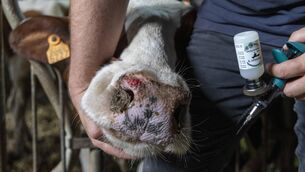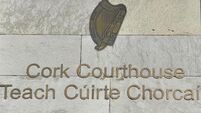The last of the high nellies: A road user near extinction

I saw a group of them dismounted and standing beside their machines a few evenings ago outside the town of Ennistymon, Co Clare, and, dammit, with their helmets off, and the leathers open, every one of the 10 of them were corpulent pensioners.
They were hairy, yes indeed, but there was a lot more hair on their faces than on the top of their heads.
Six of their polls were actually glinting, in the Clare air.
I imagine the explanation may be that by the time most bikers are able to afford the huge and powerful machines straddled by the Hell’s Angels, their owners are very far past their physical primes.
It is certainly true that the gentlemen I saw on the roadside looked much more like retired bankers, grocers, and solicitors than the young bloods we think are riding the roaring thundering machines, which will be passing us out in numbers between this and the end of the summer.
Again, the pure truth.
But it was about 25km down the same road, near the village of Inagh, that I was charmed totally, and nearly stopped in my tracks, by the sudden sight before me of another road user, of a breed I thought was now extinct.
There he was, as large as life, pedalling away, maybe the last of the great men who travelled the roads of their lives on the bicycles always called high nellies.
Many of you remember those bicycles well, and knew many of the mighty countrymen that used them for transportation through a different Ireland from now, for sure.
They were high nellies to us, even though technically the majority of them were Raleighs or BSAs.
They had huge leather saddles, that were larger than those used by cowboys.
They were surely built to last, and they weighed as much as a modern small car. They had no fancy additions like three-speed systems or anything like that.
They had spring-loaded carriers behind for bringing home the shopping.
They were not fitted with dynamo-powered lighting sets. There was just a simple hook in front for the flash lamp at night, and a similar attachment for the rear red light, in case the sergeant was stopping traffic that night. You needed to be a teenager before you could even attempt to ride one of them.
The high nellies of yore were however always equipped with steel cases around the oily chains.
This, of course, was to protect a man’s lower trousers when cycling to his Sunday mass, or some other important occasion requiring the donning of the Sunday suit.
The ends of the trousers were also always protected by ankle clips — which I have not seen for years.
Most also had real leather puncture-repair kits hanging below the rear of the saddles.
If there was a pump attached to the frame below the bar, it was always a solid iron pump, rather than a plastic yoke, and the connection was snugly inserted into the handle end.
During the big election excitements of their era, the high nellies turned out in huge numbers for Fianna Fáil and Fine Gael.
The fabled Flying Columns of our history also depended heavily on the parochial high nellies. The man outside Inagh was driving along calmly and powerfully. He was taking his time.
He was no longer young, but you’d know that he could cycle to Mullingar, Co Westmeath, if he had to, and that he had cycled long journeys, often to football matches, in the past.
I did not pass him immediately. I idled behind for a while, totally enthralled by a visual fragment from yesterday.
You’d also know this was a decent respectable citizen, a pillar of his community, a solid disc in the backbone of the village of Inagh, still proudly in command of his high nellie.
I would not be surprised at all if he inherited the machine from his father 40 or 50 years ago. High nellies were built to last. I saluted him, as I eventually passed him out. He lifted his right hand from the handlebars in acknowledgment.
As he became a dot in my rear mirror, the thought came to me that maybe these last survivors of a noble band of travellers should be christened Heaven’s Angels.
Probably not the worst idea I had this week.












